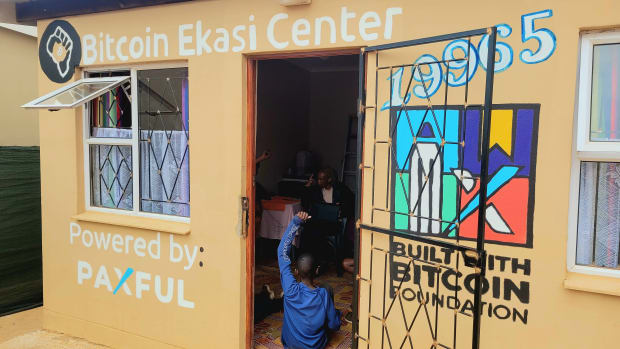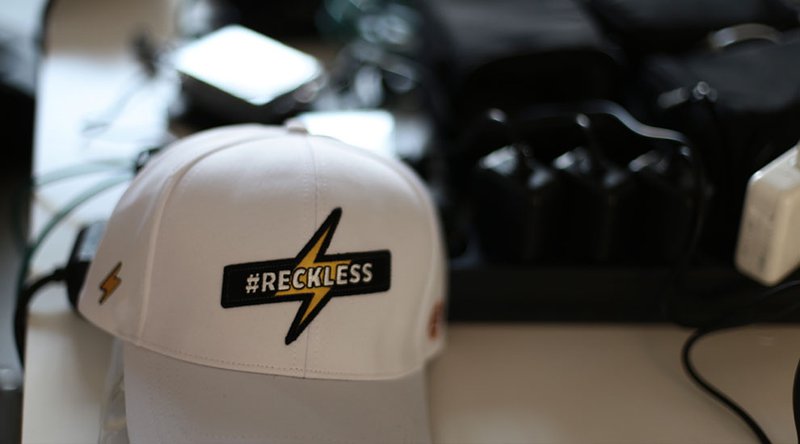Facebook’s Libra Is Here. But It Might Not Be What You Think.
Libra — sometimes referred to as “Facecoin” or “Zuckcoin” — is self-billed as “a simple global currency and financial infrastructure that empowers billions of people.” The introduction waxes cypher-poetic about the liberating nature of the internet and the potential for an online currency to unfetter financially disenfranchised populations around the world from the shackles of the inefficient and parasitic banking system.
“The world truly needs a reliable digital currency and infrastructure that together can deliver on the promise of ‘the internet of money.’”
— Facebook Libra white paper
If it sounds like “Facecoin” is hijacking Bitcoin’s narrative as an open and global monetary system, it’s because it is. But just because Libra is talking Bitcoin’s game doesn’t mean this digital currency will actually compete with the grandpappy of cryptocurrency or fulfill the same role. There’s next to nothing in the white paper that indicates it will resemble Bitcoin in function, structure or design. In reality, its real competitors are the tirelessly proliferating mass of stablecoins, any number of overly abundant and redundant altcoins, permissioned banker blockchains and smart-contract platforms — oh, and the traditional banking sector, both public and private.
The Libra white paper dropped at 5:00 a.m. EST today, June 18, 2019, and as Nic Carter said on Twitter, we’ve already reached peak “Libra saturation.” You can hardly scroll through Twitter without being slapped in the face by Libra takes. Nonetheless, here are a few takeaways from Facebook’s foray into blockchain technology. Namely, it’s a lot of what we expected and a little of what we didn’t. And the white paper left about as many (or more) questions as it addressed.
Is Libra a Cryptocurrency?
Above, I called Libra a “digital currency” for good reason: Definitions are important and we need to define our terms accordingly.
Bitcoin is a cryptocurrency. Ether is a cryptocurrency. Both of these cryptos leverage public-key cryptography to facilitate transactions, and they operate on a public/permissionless blockchain on which anyone can mine and anyone can run a full node to validate transactions.
Libra is a digital currency. It touts “the security of cryptography” and “a secure, scalable, and reliable blockchain.” These buzzwords, though, belie a janus-faced coin: one that offers the promise of true cryptocurrencies like bitcoin but which, in practice, will likely be much different.
The Libra blockchain is built using Move, a new programming language derived from Rust specifically for Libra, and it will use a Libra-tailored Byzantine Fault Tolerance consensus mechanism. Using these specifications, it’s promising 1,000 transactions per second and 10-second block times.
This should be more than feasible, given the “blockchain’s” technical structure. Blockchain is in quotes there because, technically, “Facecoin” has about as much in common with Bitcoin as a Tamagotchi pet does with a CryptoKitty.
As Jameson Lopp explains in his breakdown of the technical white paper, “there is no actual blockchain data structure in the Libra protocol — blocks are more of a virtual/logical construct that are used for the purpose of coordinating confirmed snapshots of the system state.”
In Libra’s own words, its blockchain “is a single data structure that records the history of transactions and states over time.” Unlike Bitcoin, which requires ordered, timestamped transaction batches to achieve a unified and distributedly verified state, Libra is a permissioned system “that doesn’t need to batch transactions because the transaction history is much less likely to be rewritten,” says Lopp.
$10 Million Libra Nodes
Basically, Libra’s ledger will be guarded by an echelon of approved node operators and transaction validators known as the Libra Association. These inaugural validators include the following big tech, payment, venture capital and nonprofit heavyweights: Mastercard, PayPal, PayU (Naspers’s fintech arm), Stripe, Visa; Booking Holdings, eBay, Facebook, Farfetch, Lyft, Mercado Pago, Spotify AB, Uber Technologies Inc., Iliad, Vodafone Group, Anchorage, Bison Trails, Coinbase Inc., Xapo Holdings Ltd., Andreessen Horowitz, Breakthrough Initiatives, Ribbit Capital, Thrive Capital, Union Square Ventures, Creative Destruction Lab, Kiva, Mercy Corps, and Women’s World Banking. These nodes will accrue transaction fees in Libra for their services.
To run a node, each validator must commit at least $10 million to the project, which will be represented by so-called Libra investment tokens. These tokens represent stake in the project and will entitle validators to a single seat on the Libra Association Council, a say on the project’s technical advancement and governance, Libra coin minting/burning privileges and a share of interest on the coin’s fiat asset reserves (more on this later).
Decision-making will resemble the boardrooms of the corporate world: Voting power is proportional to stake in Libra, though this right is capped to avoid concentrations of power. In addition, the white paper makes it clear that “Facebook’s role in governance of the association will be equal to that of its peers.” Additionally, each founding member’s voting presence on the council cannot exceed more than 1 percent of the council’s total representation.
The project hopes to transition to a more open and “permissionless” system (at a pace the council is comfortable with) to allot at least 20 percent of voting power to new validators who hold Libra in custody. It hopes to expand to roughly 100 members. These new members will not be subject to the 1 percent voting cap that founding members must abide by.
Libra Is Basically a Banking Cartel
Anyone can run Bitcoin, but to run a Libra node, you’d need corporate prestige and mad stacks of cash. This oligarchical structure is probably Libra’s biggest departure from Bitcoin. Coupled with the fiat-asset reserves that back Libra, this structure is more like a central bank cartel running a loosely distributed ledger than anything else.
To help it maintain “intrinsic value,” Libra will have backing from assets that arguably have no intrinsic value, including “a collection of low-volatility assets, such as bank deposits and short-term government securities in currencies from stable and reputable central banks.” As mentioned before, the Libra Association is the gatekeeper to this liquidity. It controls Libra issuance/redemption. It also retains the sole right to sell and buy Libra to re-sellers (approved exchanges and brokers), who then in turn sell to users.
Given this monetary discretion, federated structure and internal governance controls, the Libra Association resembles the U.S. Federal Reserve in some regards. Its reserve is even dubbed “the Libra Reserve” and is described as a “buyer of last resort.”
This reserve will pay out dividends to association members proportional to their Libra investment token stake and, when the coin launches, how much Libra they have in custody. The white paper also makes it clear that the coin is not a “peg” in the sense of most stablecoins. It will have a more free-flowing market rate: “As the value of the underlying assets moves, the value of one Libra in any local currency may fluctuate.”
Libra’s Competition
So who and what is Libra competing with? In structure, it resembles a banking consortium and is backed by a reserve that puts it in competition with the legacy banking structure, even if its deposits rely on the very banking system it’s positioning itself against. In this same way, it’s also a direct rival to “banking” blockchains like Ripple and Stellar altcoins, and its purportedly stable value could give stablecoins a run for their money as well.
The white paper also makes brief mention of smart contracts. This could position it as a competitor to smart-contract platforms like Ethereum, though given that it is an utter heap of mass centralization, EOS is probably a more fair comparison. (Libra’s potential 100 validators feels wildly distributed compared to EOS’s 21, however.) This validator structure, while not explicitly so, seems to resemble a proof-of-stake model as well, which places it especially in competition with EOS.
Libra Has a Lot of Loose Ends
The Libra white paper is ultimately a hodgepodge of conditionals and promises perhaps best summed up by the following contradiction: “the spirit of Libra [is] in both its permissioned and permissionless state.”
Libra cannot be at once both open and closed, guarded and free, permissioned and permissionless. Its white paper reads simultaneously like a set-in-stone document that’s also promising a tabula rasa template for future development. In essence, it says, “We’re centralized and permissionless, but we won’t be for long!”
How does it expect to get there? Well, we’re all still trying to figure that out. And so, apparently, is Libra.
Even with its permissioned node structure, the project claims to be open source. This is curious, given that the Libra Association has full control over which technical implementation and upgrades will be included in the base code and which won’t. This is tantamount to telling contributors that they can tinker all they want but that the association will be in charge of the grown-up decisions when the time comes.
The network will launch sometime in 2020, though the testnet is fully operational as of today. Lopp already broke it in, and as expected based on the white paper, he tweeted that “it just provides an interface for you to make requests to Libra nodes” and that it will “basically be an API standard for devs.”
So this begs the question as to how Libra will ever be “permissionless” as outlined in the white paper. The document does little to explicate this ostensibly important milestone. Even if it were to expand to 100 validators, this system is still exclusively exclusionary, and the association will still stand guard at the gates to Libra’s reserves and liquidity.
And then, of course, there’s the billion-byte elephant in the room: that Facebook holds personal information on nearly 2 billion people worldwide. An understandable fear has been that part of the appeal for partaking in the Libra ecosystem is access to this data and that Libra would become yet another means for Facebook to monetize user data.
But the white paper makes it clear that Calibra, Libra’s proprietary wallet, is “a regulated subsidiary, to ensure separation between social and financial data and to build and operate services on its behalf on top of the Libra network.” It also claims that users will be able to use pseudonymous/anonymous addresses that are completely divorced from Facebook profiles, but it does nothing to explicate how to set up a wallet and what the KYC/AML requirements will be.

Though we can probably expect them to be pretty strict. The white paper makes Libra’s intent to work with regulators crystal clear. Its project lead, David Marcus, also told Bloomberg that it will provide a needed dose of AML potential to the cryptocurrency ecosystem.
Libra vs. Bitcoin
So what is Libra? It is a permissioned/highly centralized distributed ledger with a native stablecoin backed by fiat assets, which will support smart contracts (and likely tokens) and will probably reach consensus using a proof-of-stake model.
To what degree Calibra will allow self-custody and how much control the association will have over transactions remain to be seen. But if permissioned chains like Ripple have set a precedent, then the association will probably have the ability to rewrite/roll back transactions.
So, despite the mainstream press fanfare, no, this is in no way a “rival” to Bitcoin. On a microscale, it could compete with any number of permissioned/centralized “blockchains,” and on the macro, it is really competing with the legacy banking system. In this way, it is almost like Bitcoin in its MO, but its execution could not be more different. And with its ostensible rejection of Bitcoin’s permissionless, deflationary and censorship-resistant design, it sacrifices these values for the “intrinsic value” of fiat economies and Big Brother’s omniscient financial gaze.
Even though it’s anathema to Bitcoin in many regards, the largest social network in the world unveiling a digital currency — cloaked as it may be in crypto and blockchain hype — will undoubtedly lubricate many people’s entrance to the crypto space. But it needs to be made clear that they aren’t buying “the next bitcoin” or even something that offers the very features that make Bitcoin appealing. Still, it could be wildly helpful to those unbanked who are poorly serviced in the legacy system, and this may be seen as a net positive — as long as the lines between what Libra is and what Bitcoin is are never blurred.
The largest social network in the world unveiling a digital currency — cloaked as it may be in crypto and blockchain hype — will undoubtedly lubricate many people’s entrance to the crypto space. But it needs to be made clear that they aren’t buying “the next bitcoin” or even something that offers the very features that make Bitcoin appealing.
So, at the very worst, Libra shanghais the crypto narrative and actually supplants modern banking. More likely, though, it will serve as a gateway drug to the good stuff; after all, if Libra is bolted on to the very system it wants to replace and that system’s fiat backbone starts to unravel, where will people turn for actual sound money?
The post Facebook’s Libra Is Here. But It Might Not Be What You Think. appeared first on Bitcoin Magazine.









